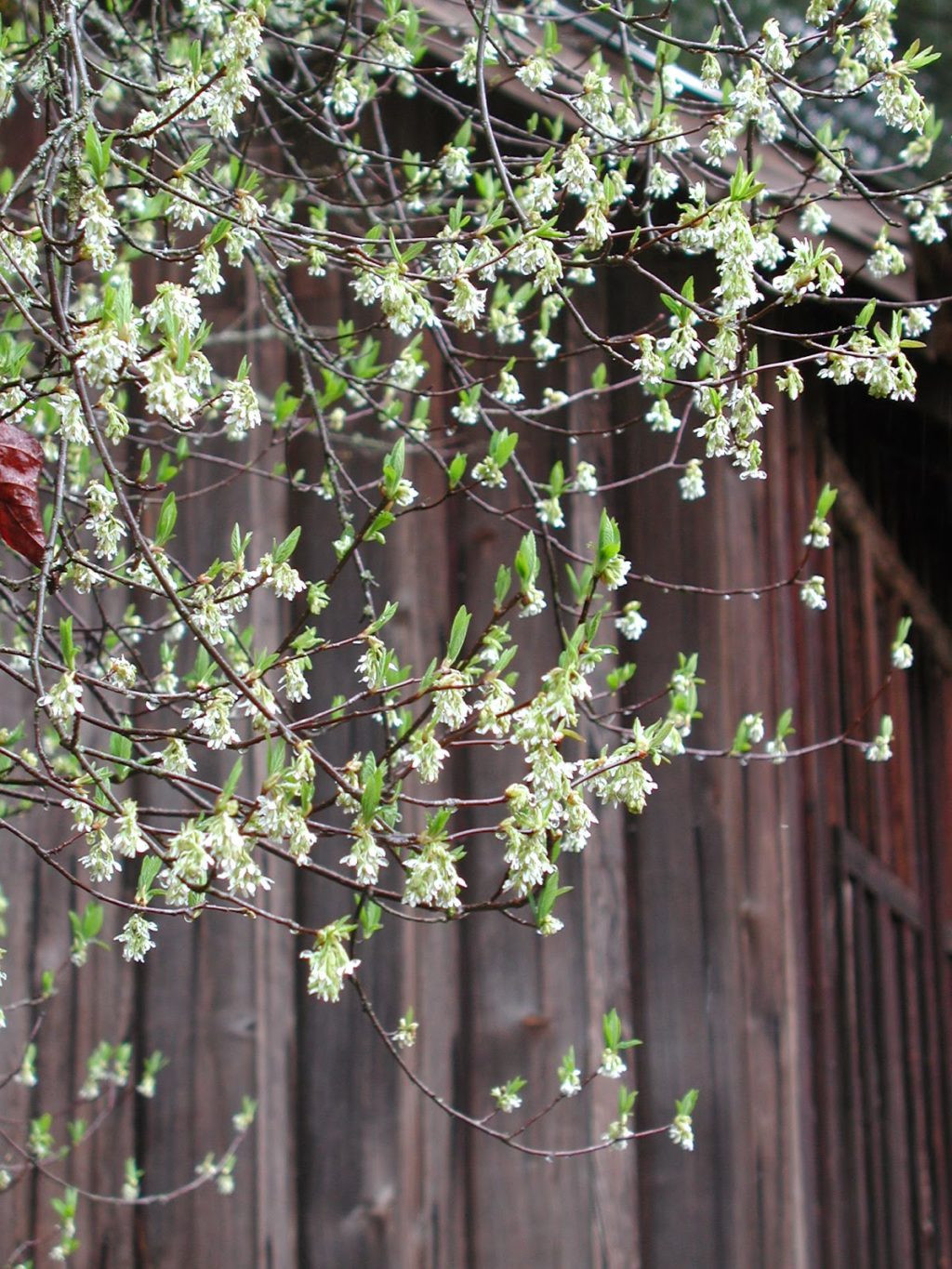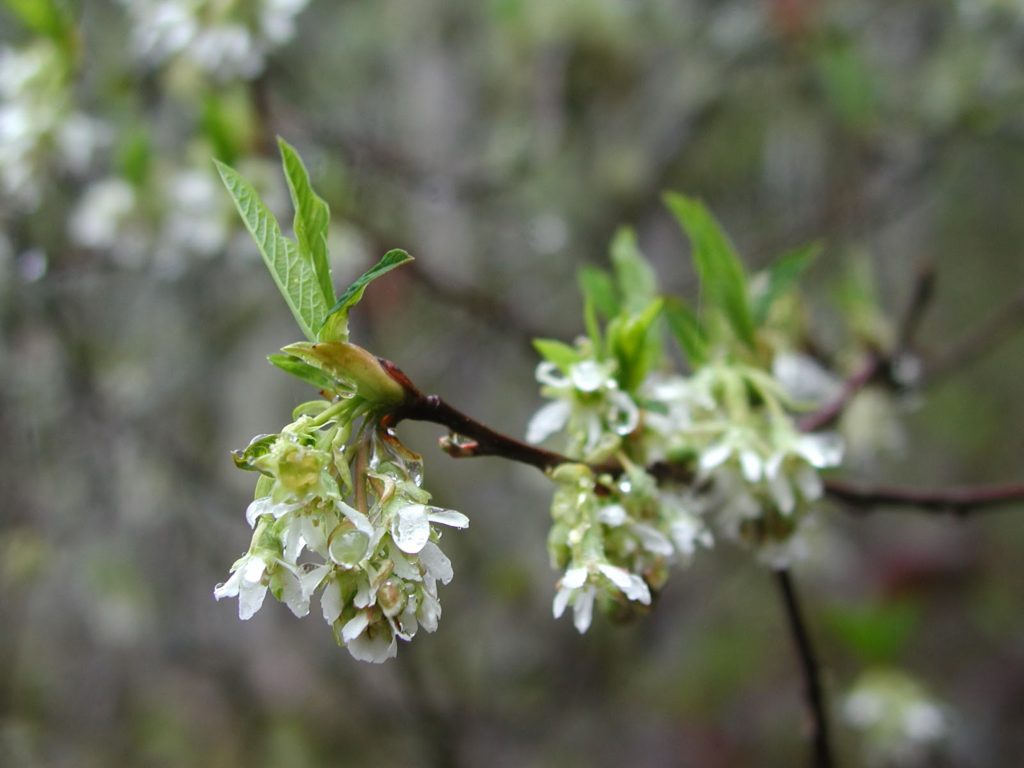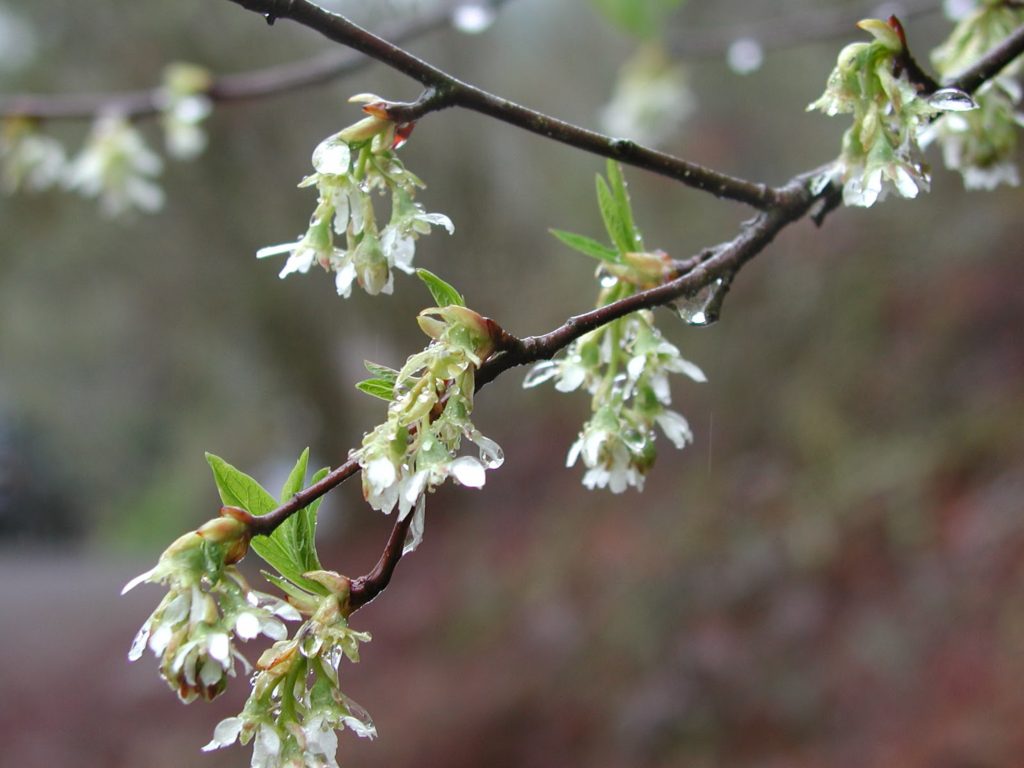Indian Plum (Oemleria cerasiformis) is in bloom, and the distinct clusters of white blossoms showing up in the forests around us are a sure sign Spring is on the way. It is also commonly referred to as Oso Berry because Oso means “bear” in Spanish, and this is a food eaten by our furry neighbors in the woods.
This shrub is a member of the cherry and plum family, and produces olive-sized, dark blue berries that are almost immediately devoured by birds when they become ripe in early summer. Waxwings and Robins especially enjoy eating them, along with coyotes, deer, bear, foxes, squirrels and raccoons. Anna’s hummingbirds enjoy drinking the nectar, and the shrub provides good nesting habitat for various bird species. These small, bitter plums were also a common food of Indigenous Peoples of the Pacific Northwest, who would gather them as soon as they ripened. The fruits were eaten fresh and dried, preserved in bear fat, cooked down into preserves, and the leaves were used in salads, the bark was also in tonic teas, and the twigs were chewed as an antiseptic.
I have been enjoying the fragrance of one large Indian Plum bush out by the chicken coop. Apparently this is a female plant, because from the way I hear it described, the male bush’s flowers smell like cat urine. Being a wildcrafter, I am curious to see if I can beat the birds to some of the fruits this summer to give them a try. They are reportedly extremely bitter and potentially toxic when under-ripe so it is important to make sure they are ripe for harvest. My plan is to try making a jam. I also found a couple of interesting recipes online using Osoberry. One was a tasty looking lamb dish with a peppery Osoberry sauce: Osoberry Ossobucco. I’ve still got a couple of bear sausages left in the freezer I would be curious to try a more wild version of this recipe. It’s always fun discovering a new wild food to try!



Leave a Reply